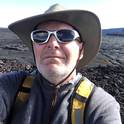| Present | Professor, University of South Florida ‐ School of Geosciences | |
|
|
||
Disciplines
Geochemistry and Geology
Research Interests
Grants
| 2013 - 2018 | Expanding the Use of Online Remote Electron Microscopy in the Classroom to Transform Undergraduate Geoscience Education |
| National Science Foundation | |
| $161,648 | |
| 2011 - 2017 | Faculty Development to Support High Impact Activities That Transform Undergraduate Geoscience Education |
| National Science Foundation | |
| $137,263 | |
| 2010 - 2014 | USF Robert Noyce Scholarship Program |
| National Science Foundation | |
| $1,200,000 |
Professional Service and Affiliations
| 2018 - Present | Vice-Chair, NCUR Oversight Committee | 2012 - Present | Member, NCUR Oversight Committee | 2000 - Present | Geoscience Councilor, Council on Undergraduate Research |
Honors and Awards
- 2017 - Fellow, Geological Society of America
- 2009 - Academic and Professional Achievement Award, Western Carolina University
- 2003 - USF President's Award for Faculty Excellence
- 2000 - USF Phi Kappa Phi Artist/Scholar Award
- 1999 - Carnegie Foundation for the Advancement of Teaching/CASE Florida Professor of the Year
- 1997 - USF Outstanding Undergraduate Teacher Award
Courses
- Introduction to Earth Sciences - ESC 2000
- The Solid Earth: Petrology and Geochemistry - GLY 3311C
- Moons Planets and Meteors: An Introduction to Planetary Science - GLY 4045
- Field Camp/Blue Ridge Microanalysis - GLY 4947L; GLY 4946L
- Analytical Techniques - GLY 6285C
- Tracer Geochemistry - GLY 6255
- Planetary Environments - GLY 6739
| 1983 - 1989 | M.A., M. Phil., Ph.D., Columbia University | |
|
|
||
| 1978 - 1983 | B.S., Western Carolina University | |
|
|
||
Contact Information
Phone: (813) 974-1598
Office: SCA 507
Email:
